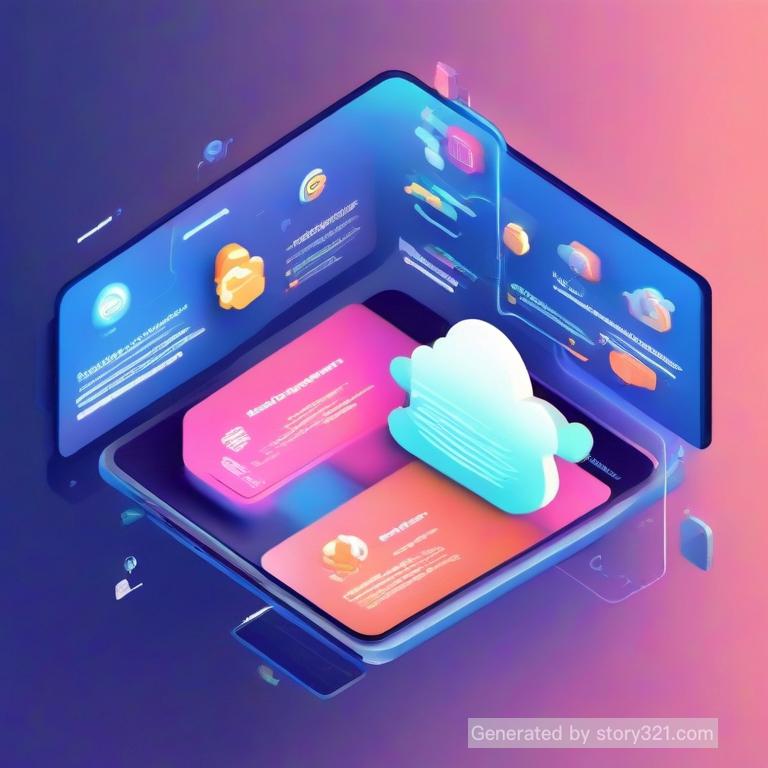
The Ultimate AIGC Guide
AIGC: Artificial Intelligence Generated Content

AIGC: Artificial Intelligence Generated Content
AIGC is the abbreviation of English AI-generated content, which is artificial intelligence-generated content.
Simply put, it uses some prompt words to generate text content, pictures, videos, animations, and even code.
AIGC, also known as Generative AI, is a new content creation method after Professional-generated Content (PGC) and User-generated Content (UGC). It can be used in conversations, stories, images, etc. , video and music production, etc., to create new forms of digital content generation and interaction.
Like all artificial intelligence technologies, AIGC’s capabilities are provided by machine learning models, which are large models pre-trained based on large amounts of data, often called foundation models. Today, the iteration speed of AIGC applications driven by basic models has shown exponential development. From AI painting applications driven by Stable Diffusion graph models to intelligent chat robots driven by large language models (LLM), deep learning models are constantly improving. The promotion of open source pre-trained basic models and the possibility of commercialization of large models are becoming the main driving forces of this disruptive revolution in artificial intelligence.
The principle of AIGC is to use a computer program to train a model to classify images into different categories. The model is trained on a dataset of images that have been manually labeled, and the program learns to identify the features that are common to images in each category.
When a new image is presented to the program, it can classify the image into the appropriate category based on the features that it has learned to identify.
The AIGC principle is based on the idea that images can be represented as a set of features, and that the features that are common to images in a particular category can be used to identify those images. For example, an image of a cat might be represented by the features “fur,” “whiskers,” and “tail.”
A program that has been trained on a dataset of images of cats would be able to identify new images of cats based on these features.
The AIGC principle has been used to develop a variety of image classification applications, including facial recognition, object detection, and medical imaging.



AIGC, starting in 2022.
The release of GPT3 and ChatGPT at the end of 2022 will mark the advent of a new era of content production. The concept of AIGC will also become popular in 2023.
Around the world, a large number of AIGC entrepreneurial teams and individuals have started a new round of entrepreneurial boom.
According to data from Google, search volume related to AIGC has increased sharply.
There are many reasons why AI-generated content is valuable. Here are a few:
Overall, AI-generated content can be a valuable tool for businesses of all sizes. It can help them to create content faster, more accurately, and more personally than ever before.
The emergence of AIGC is due to the breakthrough in parameter magnitude of large language models(LLM), which leads to the “emergent” ability of artificial intelligence. Based on this “emergent” ability, the business of using artificial intelligence to produce content was born, which is AIGC.
GPT4 is a large language model from OpenAI that was released in 2022. It has over 175 billion parameters and is trained on a massive dataset of text, code, and other data.
GPT4 is capable of generating text, translating languages, writing different kinds of creative content, answering questions, and completing tasks. It is also able to learn new things and improve its performance over time.
PaLM 2 (Pathways Language Model 2), a large language model from Google AI, was trained by a team of engineers and scientists. It is the successor to BERT, which was a major breakthrough in natural language processing.
PaLM 2 is even larger and more powerful than BERT, and it has been shown to outperform BERT on a wide range of language understanding tasks. PaLM 2 is still under development, but it has the potential to revolutionize the way we interact with computers.
LIama2 is a large language model from Meta AI that is open source. It was trained on a massive dataset of text, and it can be used for a variety of tasks, such as text generation, translation, and question answering. LIama2 is still under development, but it has already shown great promise. It is a powerful tool that can be used to create new and exciting applications.
On the basis of large language models, image generation models and video generation models have emerged.
Midjourney is an AI text-to-image generation tool that uses large language models to create realistic, high-quality images from a user-provided text prompt. It was trained on a massive dataset of text and images, and can generate images in a variety of styles, including photorealistic, cartoon, and abstract. Midjourney is still under development, but it has already been used to create some amazing images.
Stable Diffusion XL provides stable diffusion of a chemical across a cell membrane, using a chemical gradient.
Stable Diffusion XL is a chemical delivery technology that uses a gradient of chemical concentration to drive the delivery of a drug across a cell membrane. This technology is designed to be more stable than other diffusion-based drug delivery technologies, such as simple diffusion, which can be affected by factors such as temperature and pH.
Stable Diffusion XL is also designed to be more specific than other diffusion-based drug delivery technologies, such as passive diffusion, which can result in the delivery of drugs to unintended cells or tissues.
DALL·E 3 is a large language model that can generate images from text descriptions. It from OpenAI. It was trained on a massive dataset of text and images, and it can learn to generate images of any kind, including realistic-looking people, animals, objects, and scenes. DALL·E 3 is still under development, but it has the potential to revolutionize the way we create and use images.
This is the basic ability of LLM. Based on text emergence capabilities, AIGC applications mainly appear in the following aspects:
Based on chatbot, there have been some very profitable small applications in social networking and AI assistants.
These applications are mainly used to generate marketing content, write articles, papers, novels, etc.
In terms of code generation, both the technical level and the application level are still immature. Although several applications are well-known, most people remain skeptical about the effectiveness of code generation and the subsequent sustainable iterations.
At present, AIGC applications in the direction of image generation are mainly in two directions, one is to generate images from text, and the other is to generate images from images.
The main business directions include images for marketing, images used to attract attention on social platforms, and photo optimization.
In the future, I believe there will be very profitable applications in more directions. For example, animation generation, etc.
Text to Image is a type of artificial intelligence (AI) that uses a text prompt to generate an image. The AI model is trained on a dataset of images and their corresponding text descriptions. When given a new text prompt, the model can generate an image that matches the description.
Text to Image has a variety of potential applications, including:
Image-to-image translation is a type of computer vision task that involves taking an input image and generating a new image based on it. The goal of image-to-image translation is to create a realistic and visually convincing image that is semantically related to the input image.
Image-to-image translation has a wide range of applications, including:
Image-to-image translation is a challenging task, but it is also a very promising one with a wide range of potential applications. As research in this area continues to advance, we can expect to see even more impressive and useful applications of image-to-image translation in the future.
Video generation is still in its infancy, and both technology and application are still very immature. But the market is extremely popular. Almost all applications that use AI to generate videos are making a lot of money
Text to video is a process of using a text prompt to generate a video. This can be done using a variety of techniques, including machine learning and artificial intelligence. Text to video is often used to create educational content, marketing materials, or entertainment.
First, it can be a more efficient way to create content than traditional video production methods. Text to video can be generated quickly and easily, without the need for expensive equipment or specialized skills. Second, text to video can be more engaging than traditional video content.
By using a text prompt, the creator can ensure that the video is relevant to the viewer’s interests. Third, text to video can be more accessible than traditional video content. Videos that are generated using text prompts can be made available in a variety of formats, including closed captions and transcripts.
First, the quality of text to video can vary significantly. The quality of the video will depend on the quality of the text prompt, the algorithm used to generate the video, and the hardware and software used to create the video. Second, text to video can be difficult to create in a way that is both engaging and informative.
The creator needs to carefully craft the text prompt so that it is both interesting and easy to understand. Third, text to video can be expensive to create. The cost of creating text to video will depend on the complexity of the video and the hardware and software used to create the video.
Despite the challenges, text to video is a powerful tool that can be used to create engaging and informative content. As the technology continues to develop, text to video is likely to become more accessible and affordable, making it a more viable option for businesses and individuals alike.
Text and Image to Video is use text prompt and image to generate video. At present, the technology in this area is very immature.
For AI-generated content, the prompt word meaning is the context or intent that the writer is trying to convey. This can be anything from a simple description of a product to a more complex explanation of a scientific concept. The prompt word meaning is important because it helps the AI model to generate content that is relevant and informative.
When writing a prompt for AI-generated content, it is important to be clear and concise. The prompt should be specific enough to give the model a clear understanding of what you are trying to communicate, but it should also be general enough to allow the model some creative freedom.
“Write a short description of the book ‘The Great Gatsby’.”
This prompt is clear and concise, and it provides the model with a specific task to complete. The model can then use its knowledge of the book to generate a description that is both accurate and informative.
Here is an example of the output that the model might generate:
“The Great Gatsby is a novel by F. Scott Fitzgerald that tells the story of Jay Gatsby, a wealthy man who throws lavish parties in an attempt to win back the love of his life, Daisy Buchanan. The novel explores themes of love, loss, and the American Dream.”
This output is both relevant and informative, and it accurately captures the essence of the book. The model was able to use its knowledge of the book to generate a description that is both accurate and informative.
In the future, the AIGC industry will form two types of manufacturers: large models and APPs. Each large model will form its own ecosystem.
Large model manufacturers provide large models.
APP manufacturers, based on large models, export the capabilities of generative AI to every corner.
At present, the main closed source models are:
OpenAI’s GPT and DALL.E
Midjourney
The main open source models are:
Meta’s LIama
Stable Diffusion
In addition, whether Google’s large models are open source is not open source at this stage, and it is uncertain whether it will be open source in the future.
This situation is very similar to Apple’s iOS and Google’s Android, which have established their own ecosystems based on closed-source and open-source operating systems respectively.
The pattern of AIGC will also be like this. Each large model manufacturer will establish its own ecology based on its own open source or closed source large models.
AIGC will change the world!
What Does AIGC Meaning? Unveiling the Mystery Behind Artificial Intelligence Generated Content
AI Story Generator: All in one AIGC Toolset for story.